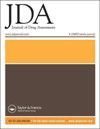Integrating high touch specialty pharmacy services within a neurology clinic to improve medication access and affordability
IF 2.4
引用次数: 0
Abstract
Abstract Background: The cost of medications has been an upfront topic in the public, with 24% of patients reporting difficulty with affordable access, and specialty medications contribute to those concerns through an increase in price by 57% since 2014. Specialty pharmacy services (SPS) were implemented into a neurology clinic to assist with medication coverage and affordability. Aims: To assess the impact of integrating high touch SPS within a neurology clinic by measuring migraine medication affordability. Methods: The dispensing data for patients (1) filling a Calcitonin Gene-Related Peptide (CGRP) receptor antagonist (CGRPra) and/or onabotulinumtoxin A (Ona A) for migraine through the onsite specialty pharmacy, and (2) being treated through the SPS-affiliated neurology clinic was gathered and analyzed for medication cost coverage and patient financial responsibility. The study endpoints were to observe a minimized patient copay and assess the amount of $0 copays after the initiation of the clinic-based SPS. Results: For the CGRPra group, the SPS were able to reduce the patient responsibility to 2% of the medication cost, and more than 25% of the CGRPra dispenses had a $0 copay. For the Ona A group, comparing January 2018 to January 2019 showed a 185% increase in vials dispensed on pharmacy benefits and a patient responsibility of < 1% medication cost in January 2019 vs 19% in January 2018. The median copay went from $150 in January 2018 to $0 in January 2019. No vials in January 2018 had $0 copays, 20 did in January 2019. Measuring 6 months before SPS were started and 6 months after, the Ona A had similar results as the January comparison, with an increase of 188% dispensed through the pharmacy and the same median copays, $150 vs $0. The number of vials with $0 copay increased from four before SPS to 112 6 months after SPS was integrated. In addition, through the SPS reimbursement audits and benefit verification for Ona A billing, the Ona A reimbursement is projected to increase by $325,000 over 3 years due to switching Medicaid Ona A patients to bill through pharmacy benefits. Conclusions: The implementation of high touch SPS in a clinic can benefit patients through prescription coordination and price mitigation. Through the SPS, patients were responsible for only 2% of the CGRPra cost and < 1% of the Ona A cost. The SPS were able to verify which insurance branch was preferred for Ona A, which helped mitigate patient copays and improved facility financials for Ona A through upfront reimbursement through the preferred method of pharmacy benefits.在神经病学诊所内整合高质量的专业药房服务,以改善药物获取和负担能力
摘要背景:药物成本一直是公众关注的一个前沿话题,24%的患者表示难以负担得起,而专业药物自2014年以来价格上涨了57%,加剧了这些担忧。专科药房服务(SPS)被纳入一家神经科诊所,以帮助提高药物覆盖率和可负担性。目的:通过测量偏头痛药物的可负担性,评估在神经病学诊所内整合高接触SPS的影响。方法:收集(1)通过现场专业药房填充降钙素基因相关肽(CGRP)受体拮抗剂(CGRPra)和/或肉毒杆菌毒素a(Ona a)治疗偏头痛的患者和(2)通过SPS附属神经科诊所接受治疗的患者的配药数据,并分析药物费用覆盖率和患者经济责任。研究终点是观察最小化的患者自付垫底费,并评估开始基于临床的SPS后的0美元自付垫垫底费金额。结果:对于CGRPra组,SPS能够将患者的责任降低到药物成本的2%,超过25%的CGRPra配药者的自付额为0美元。对于Ona A组,与2018年1月和2019年1月相比,2019年1月份,药房福利配药的药瓶增加了185%,患者承担的药物费用<1%,而2018年1月份为19%。自付垫底费中位数从2018年1月的150美元上升到2019年1月为0美元。2018年1月,没有一个小瓶有0美元的自付垫底费,2019年1月有20个。测量6 SPS开始前的几个月和6 几个月后,Ona A的结果与1月份的比较相似,通过药房配药的人数增加了188%,自付垫底费中位数相同,分别为150美元和0美元。共付0美元的小瓶数量从SPS前的4个增加到1126个 SPS整合后数月。此外,通过SPS报销审计和对Ona A账单的福利验证,Ona A报销预计将比3年增加325000美元 由于将医疗补助Ona A患者改为通过药房福利计费。结论:在诊所实施高接触SPS可以通过处方协调和价格降低使患者受益。通过SPS,患者仅承担CGRPra费用的2%,而Ona A费用的<1%。SPS能够验证哪家保险分支机构更适合Ona A,这有助于减少患者自付垫底费,并通过首选的药房福利方法提前报销,改善Ona A的设施财务状况。
本文章由计算机程序翻译,如有差异,请以英文原文为准。
求助全文
约1分钟内获得全文
求助全文

 求助内容:
求助内容: 应助结果提醒方式:
应助结果提醒方式:


